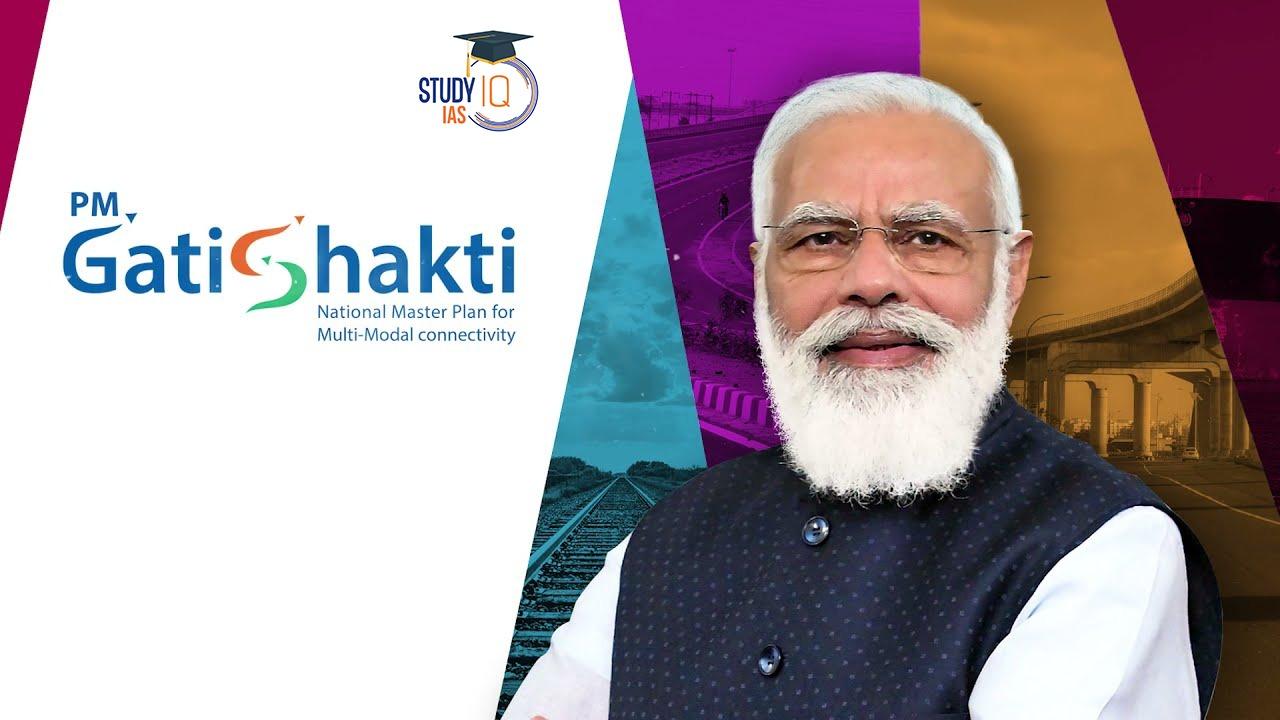Table of Contents
PM Gati Shakti: Plan
- PM Gati Shakti National Master Plan (PMGS-NMP) was launched on 13th October 2021 for providing multimodal connectivity infrastructure to various economic zones.
- PM Gati Shakti is a transformative approach for economic growth and sustainable development. The approach is driven by 7 engines, namely:
- Railways
- Roads
- Ports
- Waterways
- Airports
- Mass Transport
- Logistics Infrastructure
- The projects pertaining to these 7 engines in the “National Infrastructure Pipeline” will be aligned with PM Gati Shakti framework.
- Gati Shakti will be implemented through a digital platform that aims to bring 16 ministries and departments of the Government of India together.
- The plan will give new direction to development of modern infrastructure through planning, implementation and monitoring, apart from cutting down on time and cost overruns of projects.
- This move will help in increasing investments and contribute in the development of the country.
- Potential benefits:
- It will remove long-standing issues such as disjointed planning, lack of standardization, clearance problems, and timely creation and utilization of infrastructure capacities.
- The plan will help in tracking and monitoring projects of various departments at one centralized place.
- Priority of different projects can be decided based on cross-sectoral interactions.

PM Gati Shakti: Changes Introduced
- Reduction in fees: The railway land lease fee has been reduced to 1.5% per acre of the market value from the existing 6%.
- Lease Period: The lease period has been extended from the current five years to 35 years.
- Existing users: The existing users of the railway land for container terminal will have the option to switch to the new policy regime after transparent and competitive bidding process.
- ROW: The policy has simplified the Railways’ land use and Right of Way (ROW) for integrated development of public service utilities like electricity, gas, water supply, sewage disposal, urban transport etc by providing railway land @ 1.5% of market value of land per annum.
- One-time Fee: For Optical Fibre Cables (OFC) and other smaller diameter underground utilities, a one-time fee of Rs. 1000/- will be charged for crossing railway track.

PM Gati Shakti: Benefits of New Policy
- Container terminal: The changes in policy will help in the development of over 300 cargo terminals over the next five years under the PM Gati Shakti framework.
- It will help build more cargo terminals and aid the extension of public utilities and services under the PPP mode.
- Employment creation: The policy is expected to generate 1.25 lakh jobs while also helping Railway’s increase its share in freight transportation.
- Social infrastructure: The revised policy encourages development of social infrastructure (such as hospitals through PPP and schools through Kendriya Vidyalaya Sangthan) on railway land at a nominal annual fee of Rupee 1 per sqm. per annum.
- Infrastructure: The railway land could also be leased to set up renewable energy projects such as solar parks.
- Sewage and water treatment facilities can also be set up on these lands.
- Long term leasing of railway land up to 35 years is allowed for leasing government land mainly to Public Sector Undertakings, thereby limiting the scope of investments in cargo terminals.
- A a short-term license period of 5 years failed to attract any serious investors for creating multi-modal cargo hubs.
- Privatization of Concor: The new policy will ease the strategic divestment process of Container Corporation of India (Concor).
- Higher leasing fee was one of the reasons for not attracting buyers for Concor.





















 WhatsApp
WhatsApp